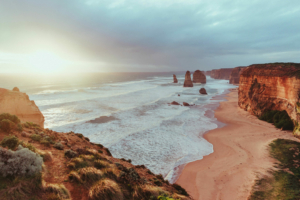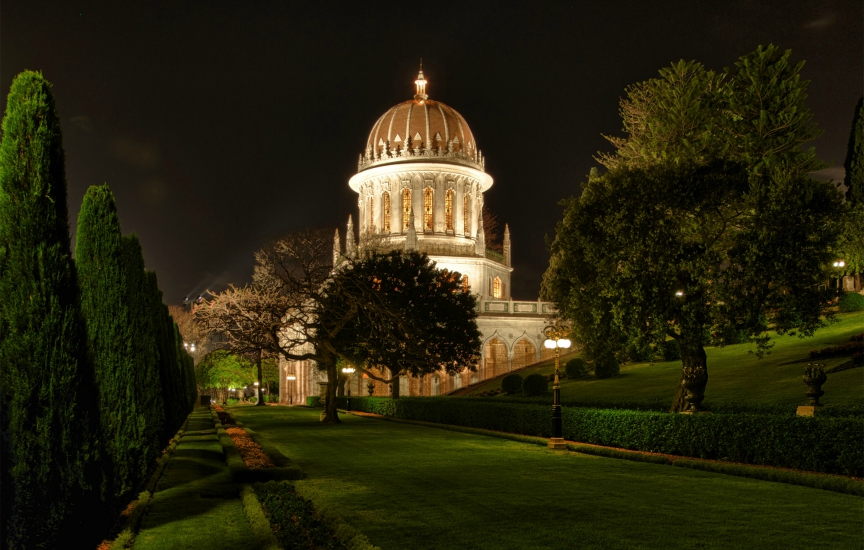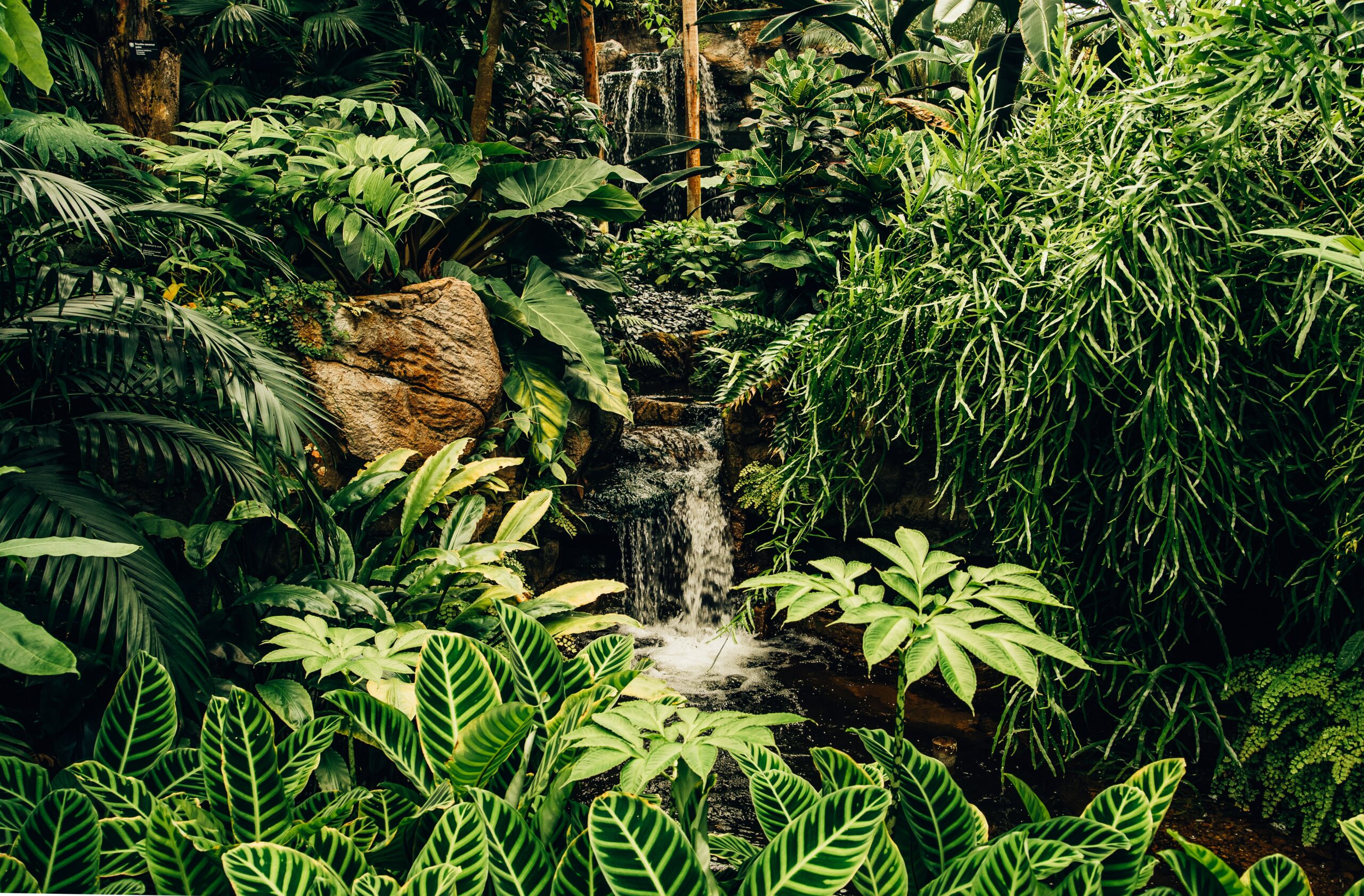Highlighting Australia
- As a proudly Australian initiative, we’re excited to showcase a collection of Australian stories, music, tributes and more.

Join activities, celebrations, study groups, spiritual empowerment and education programs for young people, and more.
Baha’i beliefs address essential spiritual themes for humanity’s collective and individual advancement. Learn more about these and more.

Featured in: The Bab and The Martyrdom of the Bab
The Bab is the Herald of the Baha’i Faith. He was the bearer of a message destined to transform humanity’s spiritual life. His mission was to prepare the way for the coming of a second Messenger from God, greater than Himself, who would usher in an age of peace and justice.
On July 9th 1850, the Bab, the forerunner to Baha’u’llah, was executed in Tabriz, Persia by a firing squad of 750 men. The Bab, which means “the Gate” in Arabic, was a Messenger of God whose role was to herald the coming of the latest Manifestation of God: Baha’u’llah. In 1909, after being hidden away for more than half a century, the Bab’s remains were finally interred on Mount Carmel, Israel.

On July 9th, 1850, the Bab, the forerunner to Baha’u’llah, the Prophet founder of the Baha’i Faith was executed in Tabriz, Persia by a firing squad of 750 men. The Bab, which means ‘the Gate’ in Arabic, was a Messenger of God, whose role can be likened to that of John the Baptist (who told of the coming of Christ) in heralding the coming of the latest Manifestation of God: Baha’u’llah.
Baha’is around the world commemorate the Martyrdom of the Bab as a holy day where work should be suspended, and for those Baha’is who are able to go on pilgrimage to the Holy Land in their lifetime, they have a special opportunity to pay their respects and say prayers at the Shrine of the Bab where His remains are buried.
After the Bab was executed, His remains were discarded outside the city gates of Tabriz, and some of His followers managed to retrieve and hide His remains for some 60 years until They were eventually transferred to the Holy Land where They were finally laid to rest on Mount Carmel in Haifa, Israel.
Abdu’l-Baha explained:
The most joyful tiding is this, …that the holy, the luminous body of the Bab … after having for sixty years been transferred from place to place, by reason of the ascendancy of the enemy, and from fear of the malevolent, and having known neither rest nor tranquillity has, through the mercy of the Abha Beauty, been ceremoniously deposited, on the day of Naw-Ruz, within the sacred casket, in the exalted Shrine on Mt. Carmel.
Abdu’l-Baha, quoted by Shoghi Effendi in God Passes By, p. 276
The location of where the Shrine of the Bab should be built was conveyed to Abdu’l-Baha by Baha’u’llah Himself in 1891. Shoghi Effendi explains this in God Passes By:
In that same year Baha’u’llah’s tent, the ‘Tabernacle of Glory’, was raised on Mt. Carmel, ‘the Hill of God and His Vineyard’, the home of Elijah, extolled by Isaiah as the ‘mountain of the Lord’, to which ‘all nations shall flow’. Four times He visited Haifa, His last visit being no less than three months long. In the course of one of these visits, when His tent was pitched in the vicinity of the Carmelite Monastery, He, the ‘Lord of the Vineyard’, revealed the Tablet of Carmel, remarkable for its allusions and prophecies. On another occasion He pointed out Himself to Abdu’l-Baha, as He stood on the slopes of that mountain, the site which was to serve as the permanent resting-place of the Bab, and on which a befitting mausoleum was later to be erected.
Shoghi Effendi, God Passes By, p. 194
Abdu’l-Baha therefore planned the structure for this “befitting mausoleum”, and later under the guidance and supervision of Shoghi Effendi, it was designed and built. Shoghi Effendi explained the significance and sacredness of this:
I cannot at this juncture overemphasize the sacredness of that holy dust embosomed in the heart of the Vineyard of God, or overrate the unimaginable potencies of this mighty institution founded sixty years ago, through the operation of the Will of, and the definite selection made by, the Founder of our Faith, on the occasion of His historic visit to that holy mountain, nor can I lay too much stress on the role which this institution, to which the construction of the superstructure of this edifice is bound to lend an unprecedented impetus, is destined to play in the unfoldment of the World Administrative Centre of the Faith of Baha’u’llah and in the efflorescence of its highest institutions constituting the embryo of its future World Order.
Shoghi Effendi, Citadel of Faith: Messages to America, 1947–1957, p. 95
For us Baha’is, the Shrine of the Bab is the second holiest place on earth after the Shrine of Baha’u’llah in Akka, and it is a place of quiet prayer and meditation where Baha’i pilgrims and visitors from around the world can come and pay their respects. Shoghi Effendi also called the Shrine of the Bab the “Kuh-i-Nur ” (which means Mountain of Light in Persian), facing the “Darya-yi-Nur” (which means Ocean of Light in Persian), in reference to the Shrine of Baha’u’llah.1
In 1987, work began in building 18 terraces (also known as ‘the hanging gardens’) above and below the Shrine of the Bab (the Shrine of the Bab being in the centre making the total number of terraces 19) and these terraces represent the first eighteen disciples of the Bab. The terraces were opened to the public in 2001 and are now one of the most visited tourist attractions in Israel. The Shrine of the Bab, the terraces, and the other Baha’i Holy Places in Israel are also listed as a UNESCO World Heritage Site.
Today the Shrine of the Bab continues to serve as a beacon of light reminding us of the transformative power and impact of the Bab’s Revelation. In a message to the Baha’i world in 1953, Shoghi Effendi described the Shrine of the Bab to the Baha’is as the…
…Queen of Carmel enthroned on God’s Mountain, crowned in glowing gold, robed in shimmering white, girdled in emerald green, enchanting every eye from air, sea, plain and hill.
Shoghi Effendi, Messages to the Baha’i World: 1950–1957 in a message dated 19 August 1953, p.175
This description reminds me of what one of the early followers of the Bab, Shaykh Hasan-i-Zunuzi, described the Bab’s voice as:
The melody of His chanting, the rhythmic flow of the verses which streamed from His lips caught our ears and penetrated into our very souls. Mountain and valley re-echoed the majesty of His voice. Our hearts vibrated in their depths to the appeal of His utterance.
The Dawn-Breakers: Nabil’s Narrative of the Early Days of the Baha’i Revelation p.250
Wishing everyone a very special holy day.
"*" indicates required fields

We recognise their continuing connection to land, waters and community. We pay our respects to Aboriginal and Torres Strait Islander people and their cultures; and to elders both past and present.
The views expressed in our content reflect individual perspectives and do not represent authoritative views of the Baha’i Faith.

Visit the site of the
Australian Baha’i Community
and the Baha’i Faith Worldwide
Notifications
It’s too bad that these wonderful posts can only be shared with five contacts. I would love to be able to share them with my entire community.
Jerry (July 7, 2013 at 1:58 AM)
Thanks for your support and encouragement Jerry! You can send the link to your community and encourage them all to sign up to the mailing list and ask them to “Like” Baha’i Blog on Facebook.
Naysan (July 7, 2013 at 3:21 AM)
Naysan thank you for this Post. There is clarity now to the significance of The Shrine of The Bab.
criselda r. figuerres (July 7, 2017 at 9:36 AM)
Vittorio Robiati from Italy
Dearest, beautiful blog and very well written. Compliments. Unfortunately not everybody watches it. Some times too much video material to see and little time available to cover everything. The srtivle on the Shrine of the BAB is very beautiful with inspiring passages from Shoghi Effendi and others.
Keep going
Vittorio
Vittorio Robiati (July 7, 2019 at 9:05 AM)
Nice holiday to you too. Thank you for sharing.
Judith (July 7, 2019 at 9:24 AM)